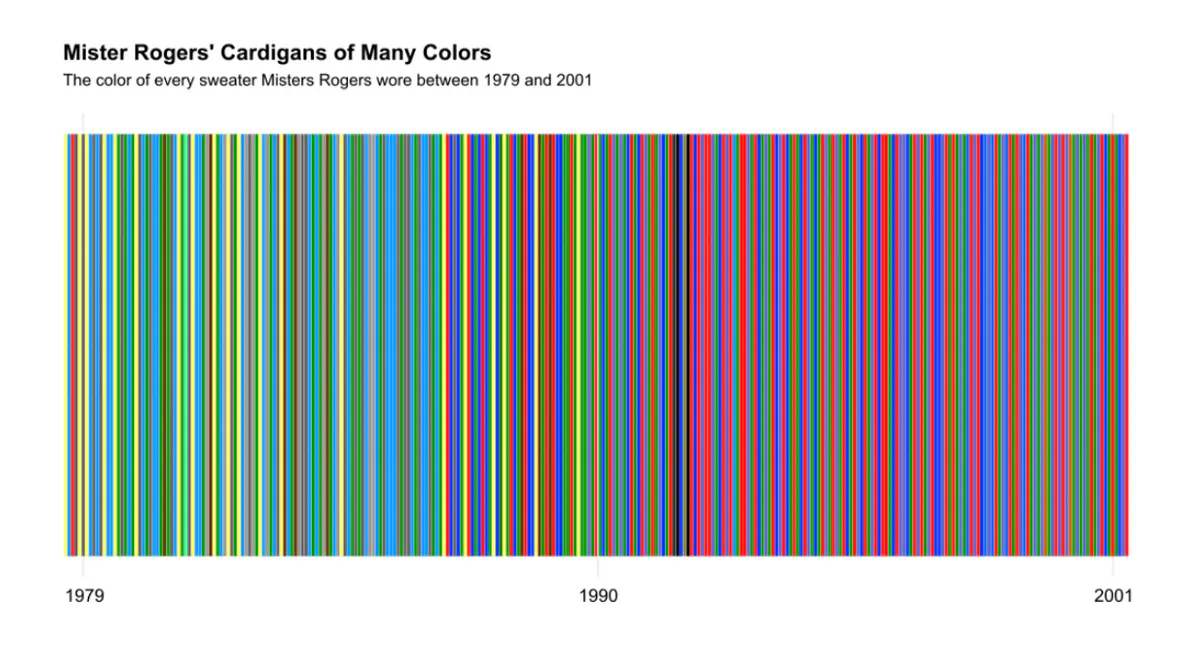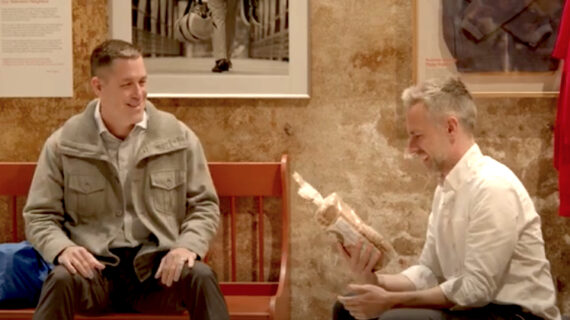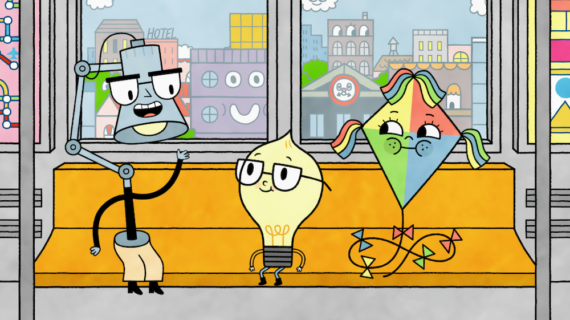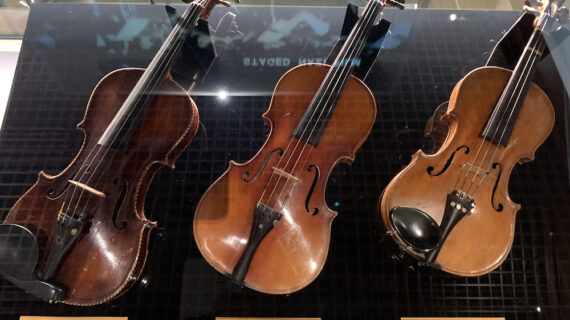
4 fun facts about Mister Rogers’ sweaters for #CardiganDay
Photo above courtesy of The Fred Rogers Company. This story by Francesca Dabecco was shared with Kidsburgh by our friends at City Cast Pittsburgh. Click here to subscribe to their free newsletter and listen to their podcast for the scoop on all things PGH.
It’s a beautiful day in this neighborhood. A beautiful day for a neighbor. Would you be mine? Could you be mine?
Mister Rogers walks through the door singing that familiar tune, trading his sport coat for a cozy sweater and dress shoes for sneakers — setting the warm, inviting tone for viewers to enter his home, his neighborhood.
The routine made the iconic sweaters synonymous with Mister Rogers himself. In honor of WQED’s #CardiganDay, here are some fun facts:
Mister Rogers’ Mom Knitted His Sweaters
Up until Nancy McFeely Rogers died in 1981, she knitted all of Fred’s cardigans seen in “Mister Rogers’ Neighborhood.” Every Christmas, she’d give each of her children a hand-knit sweater. In this Television Academy interview, Rogers said that during WWII, his mom was a volunteer nurse aide and was in charge of making surgical dressings for the troops — but she also knitted sweaters for them, too.
His Famous Red Cardigan Sits in the Smithsonian
In 1984, Rogers donated his cherry red sweater to the Smithsonian’s National Museum of American History in D.C. He wore this very cardigan when he met President George W. Bush in 2002, nearly three decades after he testified before Congress on the importance of public television.

He Actually Wore Green More Than the Iconic Red
Data writer Owen Phillips used info from The Neighborhood Archive to create a chronological chart tracking the color of every sweater Rogers wore from 1969 until the show’s final episode in 2001.
The chart reveals trends, like how harvest gold was in regular rotation, some colors (like neon blue) were worn once and never again, and how he swapped pastels for darker tones over time. Perhaps the most surprising takeaway is that the iconic red cardigan wasn’t actually Rogers’ most frequently worn — it was green. But Phillips notes that Rogers was actually red-green colorblind, so they were truly just different shades of brown to him.
Replacing Cardigans Wasn’t Easy
After Nancy died, art director Kathy Borland was tasked with finding replacements that had the same kind of cozy, vibrant feel — and a smooth zip that wouldn’t snag on camera. Borland eventually found a suitable sweater when she saw a USPS worker walking in Pittsburgh. She got a supply of white sweaters from the postal service and dyed them — a fun connection when you think about the show’s mail carrier character, Mr. McFeely.
Francesca Dabecco is editor of the Hey Pittsburgh newsletter by City Cast Pittsburgh, a daily toolkit for getting the most out of the city you love with local news, events, neighborhood guides, and more. Sign up to receive the newsletter.








